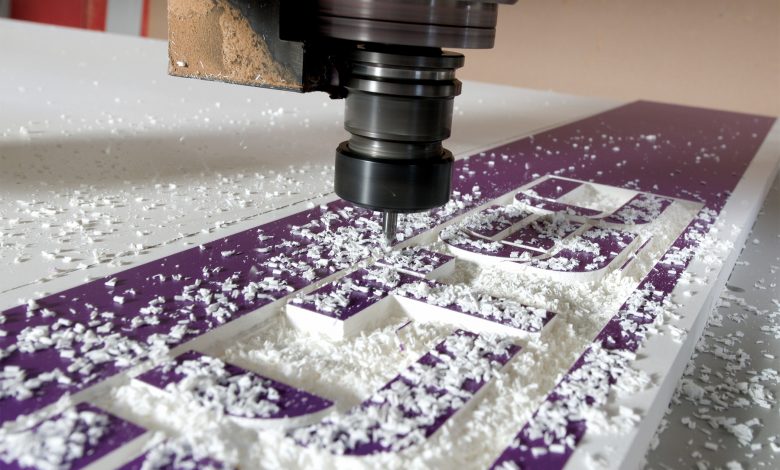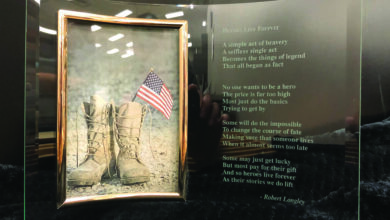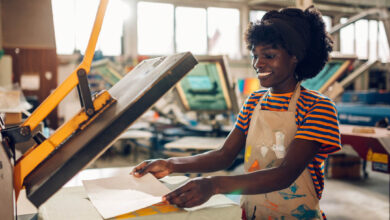CNC Router Substrates for Sign Shops
Sign shops have multiple options for CNC routed substrates for signage
Sign shops have various options when selecting a material for a sign to be routed on a CNC machine, and there’s almost always a perfect substrate for the job they want to do.
“CNC routers can cut through a wide variety of materials,” says Simona Firth, product manager for Brett Martin Plastic Sheets in Antrim, Northern Ireland. “Determining the best suitable materials for a sign includes features such as durability, dimensions, location and last, but not least, the customer requirements.”
The most common materials that sign shops use for indoor and outdoor signs include traditional wood and plastics, metal, urethane in high or medium density, and composites.
Buying decision
How do sign shops know which one of these or others to recommend to their customers wanting outdoor signage, indoor signage, or a temporary sign?
“The correct buying decision needs to be suitability for use first, then availability and price,” says Gary Scott, senior technical field representative, 3A Composites USA.
The buying decision is based on meeting the project requirements, application of the sign, the lifespan of the material, and the sign’s shape, whether straight, curved, or routed. It’s also based on location whether indoors or outdoors, and if indoors on meeting fire restrictions or codes, he says.
“Many factors contribute to this decision including aesthetic and decorative elements, structural requirements, environmental exposure, and overall process-ability. Another factor is in-house capability, such as available router bits and their composition,” says Kevin Duffy, vice-president of sales and marketing for Vycom Corp.
Sign shops, as they consider these factors, also need to cater to what the customer wants, Duffy says.
“Typically, the process begins with the overall desired look and feel, then the shop will tackle the issue of material specification,” Duffy says.
Sign shops have many materials they can suggest to the customer, from plastic to metal.
Initially, customers may start off with inexpensive materials to save on costs but find out the sign will not work for the location or meet the requirements, Scott says. For instance, a long-term outdoor sign needs to withstand weather conditions and be able to last decades without the color or paint fading, he says.
Aluminum composites
Good materials for outdoor signs needing long-term use include plywood, aluminum composites, and polycarbonate.

A long-term material is 3A Composites’ Alucobond, an aluminum composite used in such signage applications as a car dealership or a sporting arena, whereas a sign for the typical business can last five to 10 years, since many businesses change locations or close, Scott says.
The material is lightweight and flat and can be routed into three-dimensional structures. It does not distort with changes in temperature, as does solid aluminum, which can become wavy in appearance.
To avoid the material distortions, aluminum can be thickened but that adds cost and weight to the sign, making aluminum composites a preferable option.
“Aluminum has tensions inside it. That’s why it’s flat,” Scott says. “When the temperature changes, the tensions will relieve themselves and the aluminum will distort. Aluminum composites are flat and stay flat for years and years.”
Plastics
Plastics present another good option for signage because it can be fabricated with ease and decorated using numerous processes. Plastics also won’t corrode or rot and have an excellent strength-to-weight ratio, he says.
“For outdoor signage that will weather the elements, UV-stable plastic materials provide excellent options for low- to no maintenance solutions,” Duffy says. “When environmental exposure is less of a concern, such as with interior signage, a wider variety of substrates can be utilized with confidence. For temporary signage, customers usually balance aesthetic requirements with overall system cost. Plastics can be an excellent choice for all of these applications.”
Plastics come in many types and configurations and can be tuned to meet specific needs. “For example, if the installation calls for structural or extreme environmental requirements, sign companies would generally select a more robust material that could be harder to process,” Duffy says.
Foamed PVC
A type of plastic known as foamed PVC, or polyvinyl chloride, has the properties of wood but requires less maintenance. Wood has to be painted or sealed on a regular basis to keep it from rotting and has a shorter lifespan than other materials, though it is easily available and inexpensive.
3A Composites carries foamed PVC in its Sintra and e-pvc lines. Sintra is waterproof, does not rot, and can be routed or heat-formed into shape and painted with solvent-based or auto paints, particularly for outdoor uses. The less expensive version is e-pvc, which is of a lower density but has many of the same properties as Sintra. E-pvc can be used for short- and medium-term indoor and outdoor applications and long-term interior applications.
Another material option for signage is a paper-faced foam board. It can be used for short- to medium-term interior applications but is not routable because of the paper, which tears. Instead, the material is cut with a knife or digital cutter.
There are also more durable versions of foam board, featuring liners or facers made out of wood-based veneer.
PVC foam presents a good edge finish and is easy to print and engrave, while polycarbonate, another type of plastic, offers strength and great machining characteristics. Alternatively, polyester terephthalate global modified, or PETG, is known for being easy to thermoform for 3D signage and can be digitally printed. Both PC and PETG are good for illuminated signage because they provide transparency and luminosity.
“For illuminated signage, the transparency of PC and PETG is important, and Marpet and Marlon come with a gloss or anti-reflective finish to suit a variety of applications,” Firth says.
High-density urethane
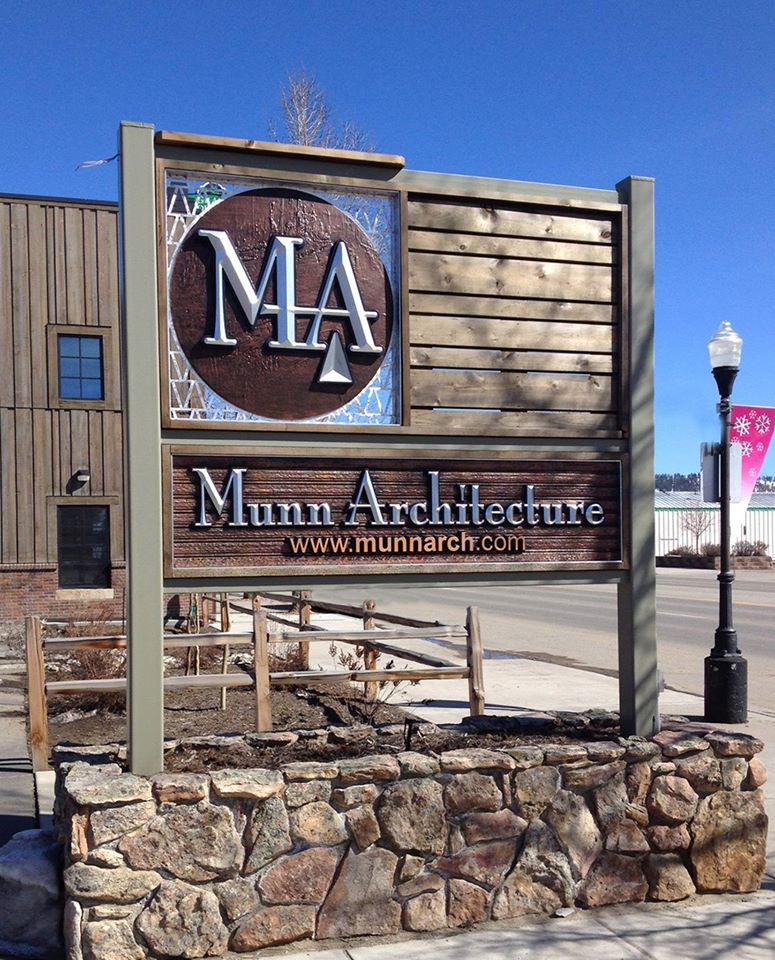
For signs with outdoor applications and that need to be dimensional, HDU is typically a good option, says Brad Burnett, HDU sales manager of DUNA-USA Inc. in Baytown, Texas.
“It’s usually a cross between cost and availability and the visual requirements the customer is trying to achieve,” Burnett says.
HDU is closed-cell and cannot absorb water, and it’s grain-free and available in large sheet sizes and multiple thicknesses. The size options eliminate some of the labor of planning and joining that is seen with a traditional wood substrate, he says.
DUNA-USA’s popular product for interior and exterior signage is the 15 lb. high-density Corafoam HDU, a polyurethane substrate that provides strength, surface smoothness, and the ability to hold detail, says Burnett. For outdoor signage, 20 lb. Corafoam may be a better option for its increased durability and surface smoothness, while for interior signage, 10 lb. Corafoam can reduce cost and still hold detail and be painted, he says.
“Corafoam HDU is known for its grain-free consistency and is among the easiest materials to cut on a CNC machine with many people comparing it to cutting a soft wood, or describing it as ‘cutting like butter,'” Burnett says.
Routing the materials
Standard high-speed steel cutting bits can be used to cut Corafoam HDU, but many of DUNA-USA’s customers say that Carbide tools last longer, Burnett says. For the 15lb Corafoam, the 52-707 cutting bit is the best performer, running at 19,350 RPM and 180 inches per minute, he says.
“At this speed, they achieved what is known as ‘optimal chip load,’ that is the fastest speed of cutting material, while still producing a clean edge and producing chips instead of dust,” Burnett says.
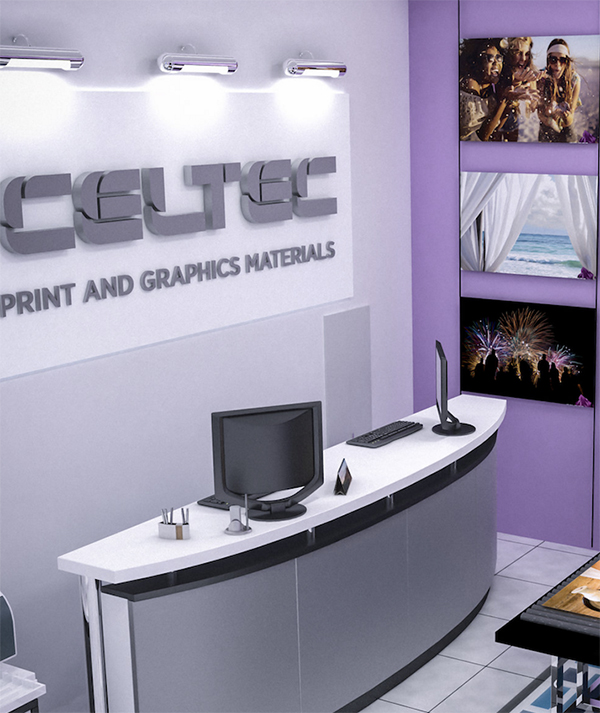
For plastics like the Vycom Celtec PVC, the material can be routed using multi-fluted carbide bits on standard woodworking equipment, Duffy says.
“Processing speeds are dependent on the material thickness and desired edge finish,” he says.
CNC routers can cut through a variety of other materials, such as aluminum composites, PVC foam, sandwich materials, and wood, Firth says. Foam, PETg, and PC are easier to cut than aluminum or other metals, he says.
Brett Martin’s Marlon Polycarbonate, Marpet PET, and Foamalux Foam PVC can be cut in intricate forms, Firth says.
“Knife tools can be used successfully for thinner gauges and simpler shapes. Router tools can be used for thicker gauges and complex shapes,” Firth says.
For Marpet-g FS PETg, routing can produce a smooth edge, best with sharp, straight or two-flute carbide-tipped bits designed for plastics.
“HSS double-edged cutters are preferred, although standard bits can be used successfully. For thinner materials straight fluted cutters are preferred,” Firth says.
Looking for more information on CNC Routers? Check out these articles:

